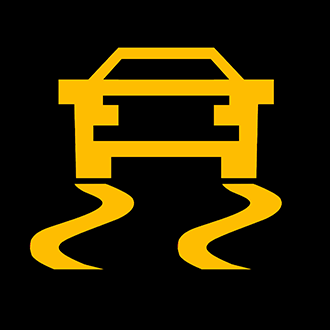Safety margins
You're driving along a country road. You see this sign. What should you do after dealing safely with the hazard?

What requires extra care when you're driving or riding in windy conditions?
What should you do when you're overtaking a motorcyclist on a windy day?
You're travelling on the motorway. How can you lower the risk of a collision when the vehicle behind is following too closely?
You're about to go down a steep hill. What should you do to control the speed of your vehicle?
What can result when you travel for long distances in neutral (known as coasting)?
You're driving on an open road in dry weather. What distance should you keep from the vehicle in front?
You're following a vehicle on a wet road. You stay a safe distance behind it. What should you do if a driver overtakes you and pulls into the gap you've left?
What does it mean if the Electronic Stability Control (ESC) indicator lamp lights up while you’re driving?

What should you do when you park a car facing downhill?
You're about to start a journey in freezing weather. What part of your vehicle should you clear of ice and snow?
How can you avoid wheelspin when you're driving on an icy road?
What would suggest you're driving on an icy road?
What will be affected if the road surface becomes soft in very hot weather?
On what type of road surface may anti-lock brakes be ineffective?
What should you do when you're driving in snowy conditions?
In which conditions will your overall stopping distance increase?
What should you do when you're using a contraflow system?
What should you do before starting a journey in foggy weather?
What will help you to move off on a snowy surface?
You’ve just gone through flood water. What should you do to make sure your brakes are working properly?
What's the main benefit of driving a four-wheel-drive vehicle?
Why should you keep well to the left as you approach a right-hand bend?

How much can stopping distances increase in icy conditions?
What's the main cause of skidding?
You're driving in a built-up area that has traffic-calming measures. What should you do when you approach a road hump?

How can you use your vehicle's engine as a brake?
Where is your vehicle most likely to be affected by side winds?
You're driving a vehicle that has anti-lock brakes. How should you apply the footbrake when you need to stop in an emergency?
How should you use anti-lock brakes when you need to stop in an emergency?
You're driving in freezing conditions. What should you do as you approach a sharp bend?
You're driving along a wet road. How can you tell if your vehicle’s tyres are losing their grip on the surface?
What lights should you use when you're driving on a wet motorway and vehicles are throwing up surface spray?
You're following other vehicles in fog. You have your headlights on dipped beam. What else can you do to reduce the chances of being in a collision?
Not enough to pass :-(
You have answered 0 correct out of 34 question(s).
What's Next?
Review your answers
See which answers you chose and what the correct answers are.
Study Guide
Review all the correct answers.
Question: {counter}
{question}
- {options}
